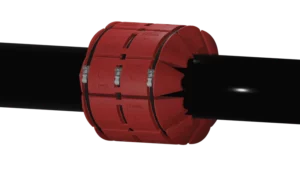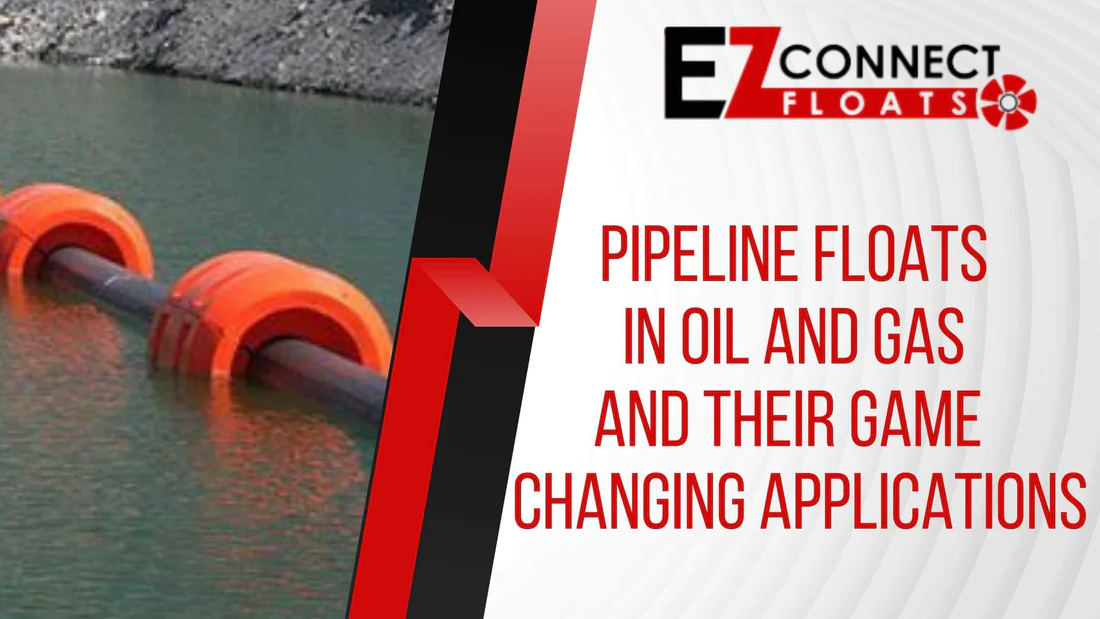
Pipeline Floats: Their Role in Oil and Gas Applications
By 2028, the pipeline floats market is expected to reach multi million USD. Pipeline floats play a vital role in dredging and many other applications like mining, sand and gravel, wastewater and sewage, and drilling mud. They also ensure the smooth and efficient transport of resources beneath the ocean’s surface.
In the blog, we will explore what pipeline floats are and how they work in oil and gas applications. If you are looking for durable pipeline floats for your oil and gas operations do check out EZ Connect Floats.
What are pipeline floats in the oil and gas industry?
Pipeline floats, also known as dredge pipe floats, are specialized devices used in the oil and gas industry. They support and protect underwater pipelines. They are typically cylindrical or spherical structures.
These floats are made of durable materials such as steel or polyethylene. The primary purpose of pipeline floats is to provide buoyancy to the pipeline. They are usually positioned at regular intervals along the length of the pipeline.
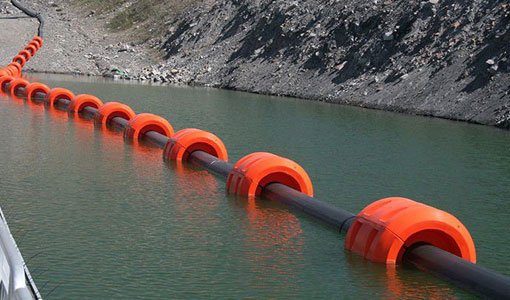
Caption: Pipe floats are vital for the oil and gas industry
How do pipeline floats work in oil and gas applications?
There are many advantages of pipeline floats in oil and gas operations, particularly when it comes to transporting resources through bodies of water or marshy terrains. Here’s a breakdown of how these floats work:
- Buoyancy and load support: These floats help keep floating dredge pipes. They prevent pipelines from sinking or resting on the seabed and provide the necessary uplift force to support the weight of the pipelines, keeping them afloat.
- Stability and alignment: The floats are strategically positioned along the pipeline’s length. This helps maintain the pipelines’ stability and alignment. It prevents excessive bending or stress, which can lead to structural damage.
- Protection from external forces: They offer protection against potential hazards and external forces. The floats keep the pipelines elevated off the seabed. This minimizes the risk of damage from rough seabed conditions, currents, and waves.
- Navigation and identification: Dredge pipe floats are often color-coded and marked with reflective materials. This aids in navigation and allows for easy identification of the pipeline’s route. It also helps prevent accidental damage during activities such as vessel anchoring or underwater construction.
- Ensuring safe transport: Such floats ensure the safe and efficient transport of oil and gas resources beneath the water’s surface. They help maintain the buoyancy of the pipelines and minimize operational risks.
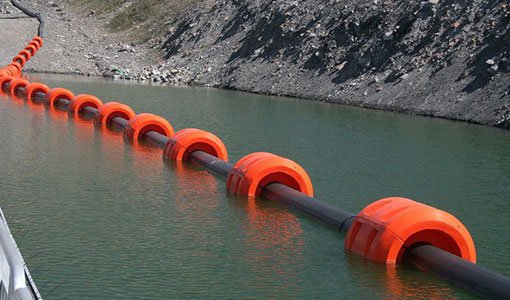
Caption: Pipe floats play vital roles in several applications
How to pick the right pipeline floats for your oil and gas project
When selecting the right pipeline floats for your oil and gas operations, here are some key considerations that you should not miss:
- Pipeline specifications: Assess the size, weight, and configuration of your pipeline. Choose pipeline floats that are compatible with the diameter and weight of your pipeline. It helps to provide adequate support and buoyancy.
- Water depth and conditions: Consider the water depth in which the floats will be deployed. Deeper waters may require floats with higher buoyancy capacities. Select floats that can withstand environmental conditions like currents, waves, and temperature.
- Load capacity: Determine the weight that the floats need to support. Ensure that the chosen floats have a sufficient load capacity to handle the weight of the pipeline.
- Material and durability: Look for floats made from durable materials that can withstand the specific conditions of your application. Consider factors such as resistance to corrosion, UV degradation, and impact resistance.
- Installation and maintenance: Evaluate the ease of installation and maintenance requirements of the floats. Opt for floats that are easy to install and maintain. This will ensure efficient and cost-effective operations throughout the lifespan of the pipeline.
- Compliance and standards: Ensure that the floats you choose to comply with oil and gas industry standards and regulations. This ensures that they meet quality and safety requirements and are suitable for your specific application.
- Manufacturer’s expertise and support: Consider the reputation, experience, and expertise of the manufacturer or supplier. Reliable pipeline float manufacturers can provide guidance, support, and customized solutions based on your requirements.
- Cost and budget: Consider the cost-effectiveness of the floats. It’s important to consider your budget but prioritize quality, performance, and long-term reliability over cost alone.
Caption: A 24-inch float by EZ Connect Floats
Why choose EZ Connect Floats?
EZ Connect Floats is the ideal choice for pipeline applications in the oil and gas industry. With easy installation and a secure connection system, they ensure a quick and reliable setup. These pipeline floats or dredge pipe floats are versatile, accommodating various pipeline sizes and configurations.
Constructed with high-quality materials, our floats offer exceptional durability and longevity, capable of withstanding harsh environmental conditions. EZ Connect Floats provide optimal buoyancy, enhance safety with visibility features, and offer a cost-effective solution for long-term value.
Summing up
Pipeline floats or dredge pipe floats are crucial components in oil and gas applications. They work to keep pipelines buoyant, stable, and protected from external forces. These floats ensure the safe transportation of oil and gas resources through underwater environments.
For more information about hose floats or get a customised free sales quote, contact us or give us a call at (858) 859-2385. EZ Connect Floats has durable floats in varied sizes to cater to all your needs.
Frequently asked questions about pipeline floats
1. What is the purpose of pipeline floats?
Pipeline floats are designed to provide support and buoyancy to underwater pipelines. They serve many purposes like preventing the pipelines from sinking or resting on the seabed. They also aid in the navigation and identification of the pipeline’s route. Such floats enable the pipeline to traverse uneven terrains and water crossings, facilitating the seamless transportation of oil and gas resources over long distances.
2.How do I determine the right size of pipeline floats for my project?
Consider the diameter and weight of your pipeline, required buoyancy, as well as the water depth and environmental conditions. Consult with experts or manufacturers who can assist in calculating the required buoyancy and load capacity.
3. What are the common materials used in pipeline floats?
Pipeline floats are commonly made using buoyant materials such as foam or hollow metal. Foam floats are typically crafted from closed-cell polyethylene or polyurethane foam, known for their excellent buoyancy and resistance to water absorption. Hollow metal floats are constructed from materials like aluminum or steel, providing both buoyancy and durability.
4. Can pipeline floats be customized for specific project requirements?
Yes, pipeline floats including dredge pipe floats can be customized to meet specific project requirements. Customization can include adjustments in size, shape, buoyancy, attachment mechanisms, and even the material used in construction. Manufacturers like EZ Connect Floats offer a range of sizes, load capacities, and attachment options to accommodate different pipeline configurations.
Have Questions?
Get in touch with us now!
Related Blogs
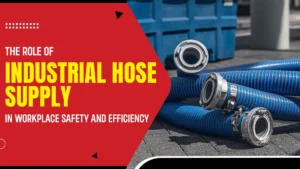
The Role of Industrial Hose Supply in Workplace Safety and Efficiency
In high-stakes industries such as oil and gas, mining, manufacturing, dredging, and defense, industrial hoses serve as vital connectors in daily operations. Whether transferring hazardous
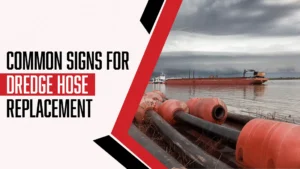
Common Signs For Dredge Hose Replacement
Dredge hose is an essential component in mining, oil and gas, and heavy industries, where it is used to transport materials such as sediment, slurry,

The Role of Automation and AI in Next-Generation Dredging Technology
Dredging technology has undergone a quiet but powerful transformation over the past decade. A purely mechanical process, which included heavy machinery, manual supervision, and reactive

